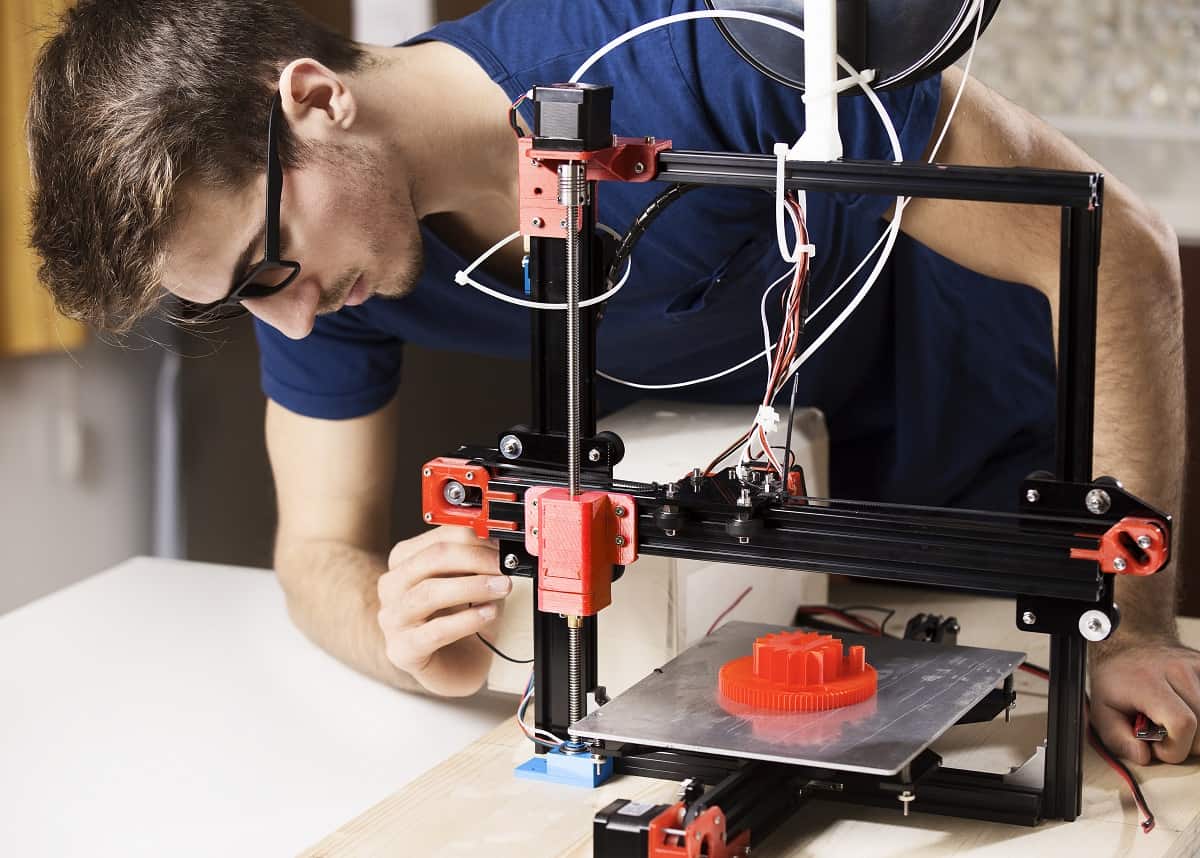While 3D printers are awe-inspiring and fun-to-use machines, not to mention super cool, they do require some pretty in-depth maintenance and upkeep to run efficiently.
One of the most common, yet arguably most important, forms of maintenance is keeping the printing bed of your 3D printer clean. But knowing how to clean a 3D printer bed is vital to this process. Let’s take a look.
3D Printing Bed: The Basics
The printing bed of a 3D printer is probably the most crucial component of the entire machine. It is the surface that the print nozzle places the printing medium onto to form the three-dimensional object. This bed needs to be totally level and flat so that the layers of filament can be placed evenly.
Traditional 3D print beds are made from glass, aluminum, or plastic, and are sometimes lined with adhesives to receive the best printing results possible. This adhesive can be a homemade treatment such as blue painter’s tape or glue stick or can be a commercial product.
There are two main factors of print beds that influence the quality of the 3D print: adhesion and release. Most folks who own a 3D printer prefer to experiment with these two factors by changing them up to get the results that work best for them.
Why you should clean your 3D Print Bed
The adhesiveness of your 3D printer’s print bed will determine how stable the first layer of filament is, and will also have a major impact on the overall quality and accuracy of the finished product. If the bottom layer of filament moves at all, the placement of every other layer will be adversely affected.
The object can also become warped if part of it becomes unstuck from the bed, especially with more significant temperature differentials. There are unique print beds known as heat beds that prevent this issue by keeping the bottom of the object warm while the rest of it is printing so that when the printing is finished, the object can cool evenly.
The release of the final product is just as important as the rest of the printing process, as even if only one part sticks to the bed, the entire print is at risk of breaking, and can also damage the bed itself. Do your best to find an adhesive that keeps the print stuck to the bed but does not prevent it from being detached altogether. It is also very important to make sure your to level your 3D printer bed.

How To Clean Your Printing Bed
Cleaning your 3D printer’s printing bed is not as difficult as it may sound, but there is some caution involved, and there are a few ways to go about doing it. The simplest way to clean the print bed is to use a lint-free cloth that does not leave fibers, in combination with rubbing alcohol.
This is a gentle and effective way to remove the excess filament and any other debris from your print bed, and you can use acetone or glasses cleaner if you do not have rubbing alcohol readily available. If you do not have access to any of those materials, you could always use distilled white vinegar, or soapy water — just be careful not to spill it everywhere.
Alternatively, you could use a plastic spatula, not a metal one, to scrape off those stubborn bits of filament and plastic. Try not to use much force, though, as you do not want to scratch the bed itself or damage it in any way.
If you have one on hand, you could use a razor blade to scrape off the excess filament as well, again being careful not to scratch the bed itself. Once you have scraped the excess filament or plastic off, wipe your print bed down with a microfiber cloth to remove any leftover debris.
Which Materials Should You Print With?
There are a variety of materials and filaments that can be used when 3D printing, each suited for different uses and applications. The most commonly used material is thermoplastic, which is what most consumer products are made from.
Engineers and designers enjoy creating functional prototypes with 3D printing materials that share some properties with the materials that are used in injection molding. These thermoplastics can be used in home 3D printing as well as professional applications.
Another super popular 3D printing material is actually the same material that is used to make LEGO bricks: ABS. ABS is super affordable, as well as lightweight and durable, and is also available in the broadest range of colors, which lends to its popularity.
A less popular 3D printing material is PLA, which also happens to be a derivative of cornstarch, meaning that it is biodegradable. This is the perfect filament for those who want to reduce their carbon footprint while still enjoying the benefits of 3D printing.
Conclusion
So, learning how to clean your 3D printer bed is not as difficult as it seems, but is still vital to the maintenance and overall performance of your 3D printer. If you have followed the steps above and are still having trouble thoroughly cleaning your print bed, consult with a professional before taking any further actions.


